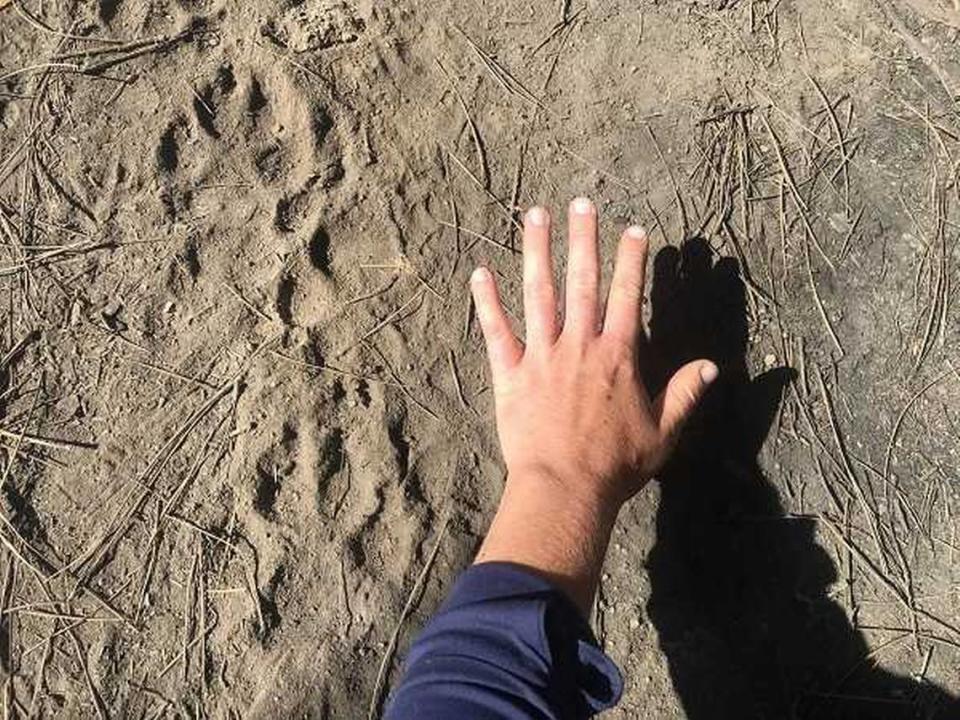A wolf pack in Sequoia is an exciting discovery. Ranchers need to accept it | Opinion
In a summer of bleak news about the natural world comes a welcome development: A pack of gray wolves has been discovered in Sequoia National Forest.
The mother and four pups — two males, and two females — were determined by state wildlife officials to be the pack living in the southern Sierra. A wolf sighting in July spurred state biologists to search where the sighting occurred. They found wolf scat and fur and wolf tracks.
The state Department of Fish and Wildlife’s forensics laboratory “performed DNA analysis to determine if the samples were from wolf, as well as sex, coat color, individual identity, relation to one another and pack origin,” the agency said in a news release. “All 12 samples were confirmed gray wolf.”

The news was cheered by wildlife advocates.
“California has reached another exciting milestone in gray wolf recovery with the discovery of a new pack in the southern Sierra Nevada,” said Pamela Flick, California program director for Defenders of Wildlife. “This recently detected group of wolves is at least 200 straight-line miles from the nearest known California pack and demonstrates the species’ amazing ability to disperse long distances and take advantage of the state’s plentiful suitable habitat.”
But ranchers who run cattle in summer months in the high country of Tulare County worry that their livestock might be hunted by the wolves.
“Wolves in Northern California have killed or maimed dozens of cows and calves in recent years, and likely many more that have gone unreported,” said John Hammon, president of the Tulare County Cattlemen’s Association in an email. “Wolf presence also stresses cows, impacting weight gain and even causing cows to abort their calves. We urge CDFW to collar these wolves as soon as possible and help ranchers avoid wolf conflicts before this pack gets in the habit of relying on livestock for their meals.”
The pack’s discovery marks California’s southernmost group of wolves in nearly a century. Gray wolves, a species native to California, used to roam the state. But as California developed and sheep and cattle ranchers pushed into the wolves’ territory, the animals were hunted until there were no more as of the 1920s.
Nearly 30 years ago the federal government began a program to reintroduce gray wolves to the northern Rocky Mountains and Yellowstone National Park. The government had a particular interest in reducing the elk population in Yellowstone because it had gotten too large. Also faring well without wolves were coyotes, whose numbers had similarly increased, and that caused different problems.
Since the reintroduction program began, wolves slowly spread west, getting a foothold in parts of Oregon. In 2011 a lone wolf, named OR 7, crossed from Oregon into far Northern California before returning back across the state line. Since then, three distinct packs have established themselves in Northern California.
Wolves returning home
News of wolves returning to the southern Sierra comes as natural disasters have occurred across America in this summer of extremes.
Phoenix endured a run of 31 days when the daily high temperature was 110 degrees or hotter; the dubious record came to an end on July 31, when it was 108.
July also saw blistering temperatures across much of the desert Southwest and Texas, as well as torrential rains in the Northeast.
More recently, a wind-driven wildfire burned away the city of Lahaina on the Hawaiian island of Maui. Close to 100 people died in the fire, making it the deadliest blaze in the United States in over a century.
Wildfire is well known in the Sierra, a mountain range with overgrown conifer forests that contribute to big blazes. Such forests are home to deer.
Deer are prey for both wolves and mountain lions, meaning the Sequoia pack will have competition. Hammon’s worries reflect how ranchers foresee a resumption of a century-old conflict.
But wolves were native to the Sierra long before any cattle operations began. It is exciting to see them now in Sequoia National Forest.

